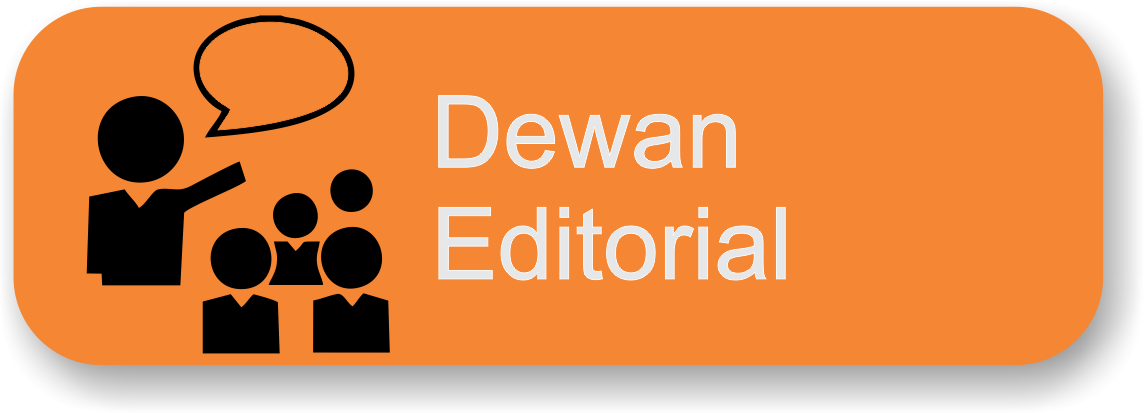PENGARUH DENSITAS URANIUM PADA PROSES PEMBUATAN PELAT ELEMEN BAKAR DISPERSI U-7Mo/Al DAN U-7Mo/Al-Si
DOI: http://dx.doi.org/10.17146/urania.2012.18.3.316
Sari
PENGARUH DENSITAS URANIUM PADA PROSES PEMBUATAN PELAT ELEMEN BAKAR DISPERSI U-7Mo/Al dan U-7Mo/Al-Si. Penelitian ini dilakukan dalam rangka mendapatkan data pengaruh proses pengerolan terhadap karakteristik produk PEB U-7Mo/Al dan U-7Mo/Al-Si densitas uranium 3,6 dan 6,0gU/cm3. Lingkup penelitian meliputi pembuatan inti elemen bakar/IEB dan pelat elemen bakar/PEB U-7Mo/Al dan U-7Mo/Al-Si serta pengujian yang meliputi: strukturmikro, kekerasan dan tebal kelongsong PEB. Pengujian strukturmikro pelat AlMg2 dan AlMgSi1 sebagai kelongsong dan PEB U-7Mo/Al dan U-7Mo/Al-Si dilakukan dengan teknik metalografi, sedangkan kekerasan kelongsong dan meat PEB dengan uji kekerasan vickers. Serbuk U-7Mo yang digunakan sebagai bahan bakar memiliki diameter partikel dengan komposisi -150 µm + 44 µm = 93,2% dan -44 µm = 6,8%. Hasil uji/analisis serbuk U-7Mo memiliki kadar U= 92,926% dan densitas 15,84 g/cm3 dan densitas matriks Al 2,7 g/cm3. Komposisi serbuk U-7Mo dan matriks Al/Al-Si untuk membuat inti elemen bakar/IEB.U-7Mo/Al dan U-7Mo/Al-Si dimensi 25x15x3,15 mm densitas 3,6 dan 6,0gU/cm3 dilakukan dengan perhitungan. Hasil hitung komposisi U-7Mo = 4,4009 g dan matriks Al/Al-Si = 2,0104 g untuk densitas uranium 3,6gU/cm3 serta U-7Mo = 7,3349 g dan matriks Al/Al-Si =1,5101 g untuk densitas uranium 6,0 gU/cm3 dan pengepresan tekanan 15 bar diperoleh ketebalan 3,00 mm dan 3,13 mm. IEB.U-7Mo/Al dan U-7Mo/Al-Si bersama frame dan cover dirakit menjadi paket rol, kemudian dirol panas pada temperatur 425oC untuk kelongsong AlMg2 dan 450oC untuk kelongsong AlMgSi1 dilanjutkan rol dingin hingga ketebalan 1,40 mm. Pelat elemen bakar hasil rol dipotong pada sisi lebar dan panjang dengan meat berada ditengah-tengahnya. Pengambilan sampel untuk uji strukturmikro, kekerasan meat dan kelongsong serta tebal kelongsong dilakukan dengan memotong meat PEB di daerah SD, TG dan SJ kemudian dilakukan preparasi sampel dan pengujian. Hasil uji menunjukkan bahwa partikel U-7Mo cenderung memanjang sesuai arah rol. Kekerasan kelongsong AlMg2 dan AlMgSi masing-masing sekitar 44,620 VHN, sedangkan kekerasan meat untuk PEB U-7Mo/Al/ U-7Mo/Al-Si densitas 3,60 gU/cm3 sebesar 182,245 VHN, sedangkan untuk densitas uranium 6,0gU/cm3 sebesar 209,272 VHN. Kenaikan kekerasan meat PEB menyebabkan pada proses pengerolan terjadi pengumpulan partikel U-7Mo sehingga kelongsong menjadi tipis. Data pengukuran diperoleh bahwa tebal kelongsong PEB U-7Mo/Al dan U-7Mo/Al-Si densitas uranium 3,6 gU/cm3 memenuhi persyaratan karena tebal kelongsong minimum >0,25 mm, sedangkan untuk densitas 6,0 gU/cm3 tidak memenuhi karena terdapat tebal minimum 0,243 mm untuk kelongsong AlMg2 dan 0,106 mm untuk kelongsong AlMgSi1. Untuk mengatasi ketipisan tebal kelongsong tersebut beberapa kemungkinan yang perlu dilakukan adalah menggunakan serbuk U-7Mo dengan partikel yang lebih halus atau menggunakan bahan kelongsong paduan Al yang memiliki kekerasan lebih tinggi.
Kata kunci : bahan bakar dispersi, pelat elemen bakar U-7Mo/Al dan U-7Mo/Al-Si, densitas uranium, tebal kelongsong.
ABSTRACT
THE URANIUM DENSITY EFFECT ON PRODUCTION PROCESS U-7Mo/Al AND U-7Mo/Al-Si OF DISPERSION FUEL PLATE. The research was conducted in order to obtain data on the influence of rolling process and product characteristics of U-7Mo/Al U-7Mo/Al-Si fuel plate with 3.6 and 6.0 gU/cm3 uranium density. The scope of the study includes the manufacture of U-7Mo/Al and U-7Mo/Al-Si fuel core and fuel plate and testing include: microstructure, hardness and fuel plate cladding thickness. The microstructure testing of AlMg2 and AlMgSi1 plate as cladding and U-7Mo/Al and U-7Mo/Al-Si fuel plate done metallographic techniques, while cladding and meat of fuel plate hardness with vickers hardness test. The U-7Mo powder used as a fuel has -150 μm particle with + 44 μm = 93.2% and -44 μm = 6.8% composition. The test results / analysis of U-7Mo powder had 92.926% uranium and a density of 15.84 g/cm3 and 2.7 g/cm3 density of Al matrix. The U-7Mo powder and matrix Al / Al-Si composition to make U-7Mo/Al-Si /U-7Mo/Al fuel core with 25x15x3, 15 mm dimensions and uranium density of 3.6 and 6.0 gU/cm3 done calculations. The results of calculating the composition of U-7Mo = 4.4009 g and the matrix Al / Al-Si = 2.0104 g for uranium density of 3.6 gU/cm3 and U-7Mo = 7.3349 g and the matrix Al / Al-Si = 1,5101 g for uranium density of 6.0 gU/cm3 and pressing pressure of 15 bar is obtained thickness of 3.00 mm and 3.13 mm. The.U-7Mo/Al and U-7Mo/Al-Si fuel core with frame and cover are assembled into packets by rollers, then heat rolled at temperatures of 425oC and 450oC for AlMg2 and AlMgSi1 cladding continued cold rolling to a thickness of 1.40 mm. Fuel plate results after rolling is cut on the width and length of the meat position being the middle. Sampling for microstructure test, hardness and meat and cladding thickness is done by cutting the meat of fuel plate in the near side, center and far side then performed sample preparation and testing. The test results show that the U-7Mo particles tend to be elongated the direction of the roll. Hardness of AlMg2 and AlMgSi cladding each about 44.620 VHN, while for U-7Mo/Al / U-7Mo/Al-Si meat of fuel plate with 3.60 gU/cm3 uranium density of 182.245 VHN hardness, while for 6.0 gU/cm3 uranium density amounted to 209.272 VHN. The increase in violence PEB meat causes the rolling process occurs particle collection U-7Mo making a thin cladding. Measurement data obtained by the U-7Mo/Al and U-7Mo/Al-Si fuel plate with uranium density of 3.6 gU/cm3 thick cladding and eligible for minimum cladding thickness > 0.25 mm, while for a 6.0 gU/cm3 uranium density not meet because there are minimum cladding thickness 0.243 mm for AlMg2 cladding and 0.106 mm for the AlMgSi1 cladding. To overcome the thinness of thick cladding are several possibilities that need to be done is to use U-7Mo powder with finer particles or using Al alloy materials that have a higher hardness.
Teks Lengkap:
PDFRefbacks
- Saat ini tidak ada refbacks.
Penerbit: Pusat Riset Teknologi Bahan Nuklir dan Limbah Radioaktif
Diindeks oleh:









